English / Language Arts
English/ Language Arts, based on Indiana’s Academic Standards for English/Language Arts, is integrated instruction emphasizing reading, writing, speaking, listening and media interest and age-appropriate content.
Grade Six Language Arts
Students apply reading, language and research skills learned in earlier grades to make sense of longer, more challenging text. Students interpret figurative language and words with multiple meanings; examine an author’s choice of words and logic of statements in nonfiction works; critique the believability of characters and plots in fiction works, read autobiographies; read and respond to fiction selections; and self-select books of interest and read independently for enjoyment. Using oral discussion, reading, writing, art, music, movement, and drama, students respond to fiction, nonfiction, and informational selections or reality-based experiences, multimedia presentations, and classroom or group experiences. Students apply their research skills by writing or delivering reports that demonstrate the distinction between their own ideas and the ideas of others, use simple, compound, and complex sentences to express their thoughts, deliver oral presentations on problems and solutions and show evidence to support their views, and listen to literature read aloud and write independently for enjoyment.
This is a one year course.
Grade Six X Language Arts (Honors)
Students build upon the fundamental reading, language and research skills learned in earlier grades to make sense of longer, more challenging texts. Students explore literature, language, and communication in depth. Students engage with a diverse selection of texts to interpret figurative language, examine author’s word choices and logic statements in non fiction; critique fiction; read autobiographies; and self select books of interest and read independently for enjoyment. Students will refine their writing skills to express individual thoughts, engage in class discussions and collaborative activities to enhance oral communication skills. This course aims to cultivate a deep appreciation for literature, critical thinking, and effective communication skills.
This is a one year course.
Grade Seven Language Arts
Students build upon knowledge and skills learned in grade six in reading, language and research. Students develop advanced skills and strategies in reading; understand comparisons, such as analogies and metaphors; and begin to use knowledge of roots and word parts to understand cross curricular vocabulary, read reviews, as well as critiques of both informational and literary writing; respond to fiction selections; and self-select books of interest and read independently for enjoyment.
Students develop advanced skills and strategies in language, using oral discussion, reading, writing, art, music, movement, and drama, respond to fiction, nonfiction, and informational selections or reality-based experiences, multimedia presentations, and classroom or group experiences; write or deliver longer research reports that take a position on a topic, and support positions by citing a variety of sources; use a variety of sentence structures and modifiers to express thoughts; deliver argumentative presentations that state a clear position in support of an argument or proposal; and listen to literature, read aloud and write independently for enjoyment.
This is a one year course.
Grade Seven X Language Arts (Honors)
Students build upon knowledge and skills learned in grade six. This course fosters a deeper understanding of critical reading, writing, analytical thinking, and overall appreciation of language arts. Students develop advanced skills in reading; understand comparisons and begin to understand cross curricular vocabulary; respond to fictional texts; and self-select books of interest and read independently for enjoyment. Additionally, students develop advanced skills and strategies in language; write or deliver longer research reports with multiple citations; deliver argumentative presentations. This course prepares students for more advanced language arts coursework.
This is a one year course.
Grade Eight Language Arts
Students build upon knowledge and skills learned in grade seven in reading, language and research. Students begin to study the history and development of English vocabulary; compare different types of writing as well as different perspectives on similar topics or themes; evaluate the logic of informational texts and analyze how literature reflects the backgrounds, attitudes, and beliefs of the authors; read and respond to fiction selections; and self-select books of interest and read independently for enjoyment, and prepare for the language challenges of high school materials.
Students use oral discussion, reading, writing, art, music, movement, and drama, students respond to fiction, nonfiction, and informational selections or reality- based experiences, multimedia presentations, and classroom or group experiences; write, deliver and conduct research; use subordination, coordination, noun phrases and other devices of English language conventions to indicate clearly the relationship between ideas; deliver a variety of types of presentations and effectively respond to questions and concerns from the audience; and listen to literature read aloud and write independently for enjoyment.
This is a one year course.
Grade Eight X Language Arts (Honors)
Students build upon knowledge and skills learned in grade seven. This course fosters a deeper understanding of critical reading, writing, analytical thinking through a comprehensive study of language arts. Students begin to study the history and development of English vocabulary; compare different types and perspectives in literature, evaluate the logic of informational texts and analyze how literature reflects the author. Students self-select books of interest and read independently for enjoyment, and prepare for the language challenges of high school materials. Students develop stronger communication skills both in writing and oral discussions, and deliver a variety of types of presentations.
This is a one year course.
Research It!
Sixth grade students develop reading skills with non-fiction text and improve research skills. This course will also assist students with other content courses that require them to research various topics and produce quality projects.
This is a one semester course



